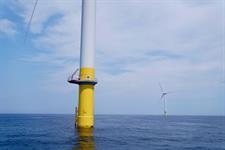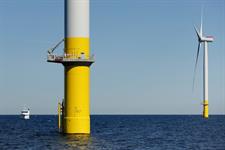India plans 8GW annual wind auctions under reformed bidding process
Energy Disrupter

The wind energy division of the country’s new and renewable energy ministry in Delhi announced this week that it will seek bids for cumulative capacity of 8GW each calendar year until 2030.
The tenders will be spread across what the ministry termed the “eight windy states” across the south and west of the country, which include Tamil Nadu, Gujurat and Rajasthan.
India wants 500GW – amounting to 50% – of its electricity demand to be met by renewables by 2030, with 140GW of this target to be met by wind energy alone.
In November, the ministry set out plans to auction five seabed leases that it believes could support nearly 4GW of offshore wind capacity in its debut tender.
And following a successful 1.1 GW onshore wind tender in July, Francis Jayasurya, India director of GWEC, told Windpower Monthly he thought the country’s auction market had begun to stabilise.
End of reverse auctions
Under the previous bidding system of electronic reverse bidding, participants could reduce their offer price to get contracts at the lowest price.
But the wind industry opposed the system and made numerous requests to reform it over the last five years, with no success.
The industry claimed that tariffs were too aggressive under the previous process, which resulted in cancellations and delays in the execution of awarded projects.
New system
A key difference under the new system, which applies to onshore wind auctions, is that participants will not now be required to change their quoted price for the sale of power.
Under the new process, bids will be submitted under a “single stage, two envelope, closed bid basis”.
One envelope will contain the participant’s technical bid while the other will contain its financial bid. Technical bids will be opened first, followed by the financial bids for those participants which qualify.
According to ministry specifications, to qualify for the technical bid, participants “must have adequate financial capacity and technical manpower to set up the project”.
The ministry said that to boost wind capacity evenly across its target areas, every submission will be a “composite bid” comprising state-specific sub-bids in all eight of its “windy states”. Bids will specify the capacity to be installed and one sub-bid will be specific to one state.
The ministry said the auction would be awarded to the lowest bidder in the closed bid and that if there is only one bidder, or if no bid is received in a sub-bid, the capacity could be added to the next tender.
Crucially, power generated from capacity in each of the state sub-bids would then be sold at a “pooled tariff” to all buyers.
Penalties
The system includes a penalty process for participants which are awarded projects but fail to commission them on time.
If project commissioning is delayed by a year or more beyond the agreed date, the bidder’s performance bank guarantee – a form of deposit – will be lost.
Where project commissioning is delayed by more than 18 months, the ministry said the bidder would be barred from future auctions for five years.
















